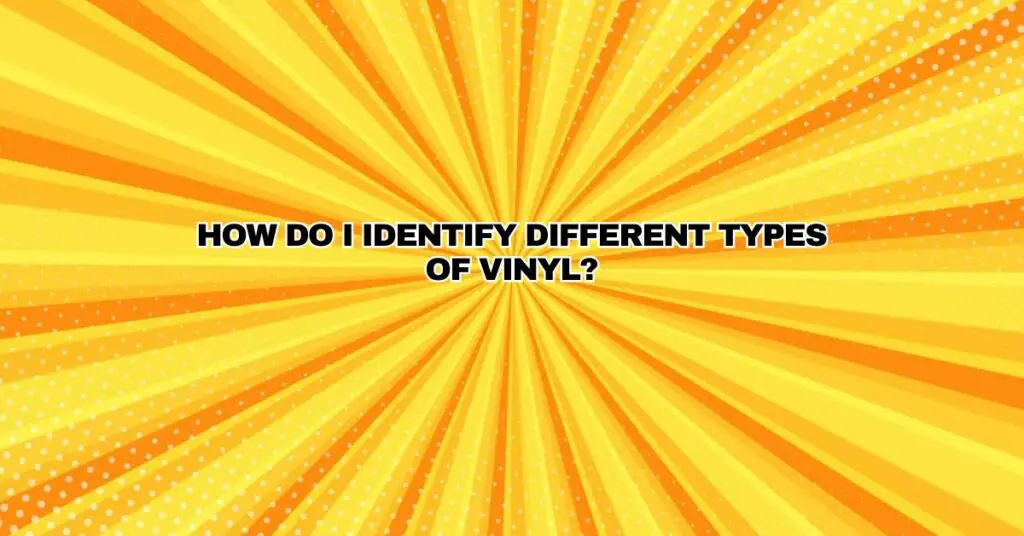Vinyl records have become a beloved medium for music enthusiasts, offering a tactile and analog listening experience that’s hard to replicate with digital formats. However, the world of vinyl is diverse, with various formats and pressings. To appreciate vinyl fully and build a curated collection, it’s essential to be able to identify different types of vinyl records. In this article, we’ll explore the various types of vinyl records and how to recognize them.
1. Standard Black Vinyl:
The most common and widely recognized vinyl record is the standard black vinyl. These records are traditionally black in color, with standard grooves and labels. They come in various sizes, including 7-inch singles, 10-inch EPs, and 12-inch LPs. To identify standard black vinyl, look for the characteristic black coloration, which accounts for the majority of vinyl records.
2. Colored Vinyl:
Colored vinyl records have gained popularity among collectors and music enthusiasts. These records are pressed using vinyl in various colors, including red, blue, green, and even transparent hues. Identifying colored vinyl is straightforward, as they are visually distinctive due to their vibrant or translucent appearances. The color should be consistent across the entire surface.
3. Picture Discs:
Picture discs are a unique type of vinyl record that features artwork or images printed on the surface of the record itself. These records often have a transparent section in the center, allowing you to see through to the label. To identify a picture disc, simply look for the distinctive artwork or images on one or both sides of the record.
4. Picture Discs with Colored Vinyl:
A variation of the picture disc is the picture disc with colored vinyl. These records combine the visual appeal of the picture disc with the distinct coloring of the vinyl. They can be easily recognized by the combination of both features, often displaying artwork and vibrant colors on the record.
5. 180-Gram Vinyl:
180-gram vinyl records are known for their heavy and robust construction. These records are thicker and more substantial than standard vinyl, which is usually around 140 to 160 grams. To identify a 180-gram vinyl record, feel the weight and thickness. It should be noticeably heavier and more solid in your hand.
6. Audiophile Pressings:
Audiophile pressings are designed for the discerning listener who demands the highest audio quality. These records undergo meticulous mastering and pressing processes, often using premium vinyl material. While there may not be a distinct visual identifier, audiophile pressings are typically labeled as such on the packaging. Look for phrases like “audiophile quality” or “audiophile edition.”
7. Limited Editions and Special Pressings:
Limited edition and special pressings often feature unique characteristics that set them apart. These records can come in various forms, including colored vinyl, gatefold sleeves, textured covers, or even additional inserts. To identify limited editions, look for labels or stickers on the packaging that specify their rarity or unique features.
8. 45 RPM Records:
While most vinyl records play at 33⅓ revolutions per minute (RPM), 45 RPM records are less common but offer distinct audio advantages. These records usually have larger center holes and require a 45 RPM turntable setting. To identify a 45 RPM record, check the label or packaging for the RPM specification.
9. Shaped Vinyl:
Shaped vinyl records are a novelty format with unique, non-standard shapes. These can take on various forms, from hearts and stars to the outlines of characters or objects. Shaped vinyl is easily recognizable by its distinctive shape and artwork.
10. Colored Splatter or Swirl Vinyl:
Colored splatter or swirl vinyl combines multiple colors to create visually stunning and unique patterns. The vinyl features splatters, swirls, or other artistic designs that make each record visually distinctive. These records are easy to identify due to their captivating visual patterns.
11. Test Pressings:
Test pressings are typically limited to a handful of copies and serve as quality control copies before a full production run. They are often unmarked or have simple labels. Test pressings can be identified by their minimalist appearance and the term “test pressing” on the label.
12. Flexi-Discs:
Flexi-discs are thin, flexible, and lightweight records often used for promotional purposes. These records can be easily bent and are usually square or rectangular. Flexi-discs are recognized by their flexibility and lightweight construction.
13. Record Club Pressings:
Record club pressings are typically produced for record club subscriptions. They may have different labels, markings, or identifiers on the packaging. These pressings can be recognized by club-specific branding and catalog numbers.
In conclusion, identifying different types of vinyl records involves recognizing visual and tactile cues, along with understanding the specific characteristics of each format. Whether you’re a casual listener or a dedicated vinyl collector, being able to identify various vinyl types can enhance your appreciation of this timeless music medium and help you build a collection that suits your personal tastes and preferences.

